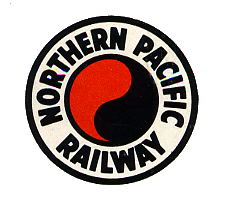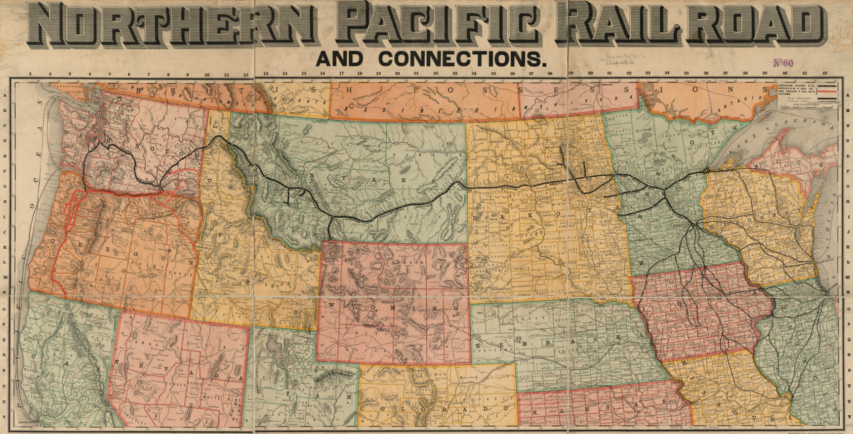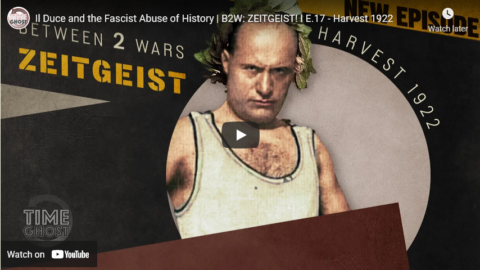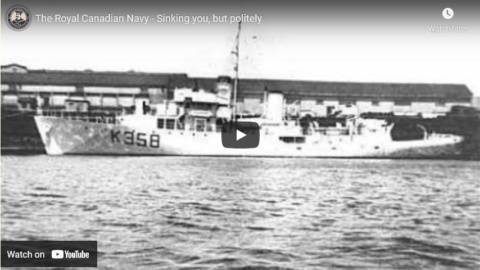Rex Krueger
Published 5 May 2021I tested three planes for year. Is one of them right for your shop and budget?
More video and exclusive content: http://www.patreon.com/rexkrueger
Tools and Links Below! (Scroll down)———————————————————————-
Planes in this video:
Stanley Sweetheart No. 4: https://amzn.to/3nOtG3G (affiliate)
Stanley Sweetheart Low Angle Jack: https://amzn.to/3h2E5qZ (affiliate)
Kunz Plus Smoothing Plane: https://amzn.to/3b3zOzI (affiliate)
ECE Jack Plane: https://bit.ly/3epiGXD (non-affiliate)
ECE Jack in Europe: https://www.fine-tools.com/doppelh.html (non-affiliate)———————————————————————-
Take your planing to the next level with these videos:
Hand tools for $100 #3: Fast plane restoration with BENCH GRINDER:
https://youtu.be/P6-zQSFUl84True Beginner: Learn to use your hand plane!:
https://youtu.be/J0-sP9pOFvATrue Beginner: Basic Sandpaper Sharpening
https://youtu.be/gY6pOKQRw74Will a premium plane really cut “out of the box”?:
https://youtu.be/pnV27QVLmzASuper-tuning the Stanley 12-404 plane:
https://youtu.be/OrMQrKn61kAFast freehand sharpening: no jigs, no guides, no sandpaper:
https://youtu.be/EmyW8nFDLr4Also, check out this playlist, All About Handplanes:
https://youtube.com/playlist?list=PLR…———————————————————————-
Make your own planes with the Specialty Plane Bundle! It includes:
– Router Plane
– Spoke Shave
– Low Angle Jack Plane
– Rabbet Plane
– Grooving Planehttps://youtube.com/playlist?list=PLR…
———————————————————————-
Sign up for Fabrication First, my FREE newsletter: http://eepurl.com/gRhEVT?
———————————————————————-
Wood Work for Humans Tool List (affiliate):
*Cutting*
Gyokucho Ryoba Saw: https://amzn.to/2Z5Wmda
Dewalt Panel Saw: https://amzn.to/2HJqGmO
Suizan Dozuki Handsaw: https://amzn.to/3abRyXB
(Winner of the affordable dovetail-saw shootout.)
Spear and Jackson Tenon Saw: https://amzn.to/2zykhs6
(Needs tune-up to work well.)
Crown Tenon Saw: https://amzn.to/3l89Dut
(Works out of the box)
Carving Knife: https://amzn.to/2DkbsnM
Narex True Imperial Chisels: https://amzn.to/2EX4xls
(My favorite affordable new chisels.)
Blue-Handled Marples Chisels: https://amzn.to/2tVJARY
(I use these to make the DIY specialty planes, but I also like them for general work.)*Sharpening*
Honing Guide: https://amzn.to/2TaJEZM
Norton Coarse/Fine Oil Stone: https://amzn.to/36seh2m
Natural Arkansas Fine Oil Stone: https://amzn.to/3irDQmq
Green buffing compound: https://amzn.to/2XuUBE2*Marking and Measuring*
Stockman Knife: https://amzn.to/2Pp4bWP
(For marking and the built-in awl).
Speed Square: https://amzn.to/3gSi6jK
Stanley Marking Knife: https://amzn.to/2Ewrxo3
(Excellent, inexpensive marking knife.)
Blue Kreg measuring jig: https://amzn.to/2QTnKYd
Round-head Protractor: https://amzn.to/37fJ6oz*Drilling*
Forstner Bits: https://amzn.to/3jpBgPl
Spade Bits: https://amzn.to/2U5kvML*Work-Holding*
Orange F Clamps: https://amzn.to/2u3tp4X
Screw Clamp: https://amzn.to/3gCa5i8Get my woodturning book: http://www.rexkrueger.com/book
Follow me on Instagram: @rexkrueger
May 6, 2021
Three Mid-Priced Handplanes Tested for a Year
Cold War 2: Electric Dumbaloo
Seva Gunisky at Hegemon has some thoughts on the undeclared-but-real new Cold War between the Peoples’ Republic Of China and what remains of the “west”:
Last week I discussed some reasons for and against the label of “Cold War” to describe US-Chinese relations, but mostly ignored the ethical implications of this debate. Since then I’ve encountered some genuinely terrible takes on the subject, so I wanted to expand on the idea just a bit.
One thing I failed to mention is how the presence of Chinese-Americans in the US — something largely missing during the first Cold War — complicates the debate. If you’re a China dove, one argument might be that any criticism of China’s regime amounts to racism against Chinese-Americans …
I’ve worked with many people with Chinese ancestry and people who came to Canada quite recently (in the software business it’d be hard to avoid working with folks from former and current communist countries), so I’ve always tried to be as careful as possible to couch my criticism of China — the PRC — to ensure that even a casual reader is clear that I’m against the government and their system, not individual people from China. It doesn’t always work, because for too many people these days, everything has to be viewed through a racist lens and anything that might possibly look or sound like racism must therefore absolutely be racism.
I think this argument can be taken too far, and used as a cheap way to shield China’s regime from legitimate criticism. As Alex Hazanov points out, it’s the same patronizing conflation people make when arguing that any criticism of Israel must be an attack on American Jews.
The doves are right, however, that the presence of nearly four million Chinese-Americans makes cold war discourse more fraught than the first time around, when the Soviets were “white” and safely far away. Official statements and attitudes will have to take special care, but in general the US does not have a great history in this regard. I fully expect reactionary cranks to demand that Chinese-Americans publicly and ritualistically denounce the Chinese government. Still, I hope it should be obvious that characterizing any critique of China’s government as “imperialist” or “sinophobic” is silly.
But brace yourselves for the shitstorm of dumb that will accompany this (hopefully cold) geostrategic conflict:
Take first Cold War discourse, add a dash of racism, filter it through social media, and you are beginning to get a sense of how dumb the debates are going to be.
[…]
And if we are going to pick a cold war “doctrine”, we should consider that neither Russia or China is looking great in the medium run. It seems that despite its supposed efficiency the Chinese regime is unable to resolve the information problem common in closed regimes, that regime personalization under Xi has worsened the problem, and that this, combined with structural/demographic problems, means the Chinese regime has a rough road ahead in the next 10-30 years.
If so, the best policy for US is certainly to avoid head-on confrontation in favor of something like neo-containment. But that’s another conversation.
H/T to Colby Cosh for the link.
Il Duce and the Fascist Abuse of History | B2W: ZEITGEIST! I E.17 – Harvest 1922
TimeGhost History
Published 5 May 2021The modern age is an age of modern things. But it is also an age when people yearn for times past. One of the main men to weaponize this yearning is Benito Mussolini, and this season, he moves to recreate the Roman Empire in his fascist image.
Get your own Indy Neidell Tie here: https://www.youtube.com/channel/UC4Mi…
Join us on Patreon: https://www.patreon.com/TimeGhostHistory
Hosted by: Indy Neidell
Written by: Francis van Berkel
Director: Astrid Deinhard
Producers: Astrid Deinhard and Spartacus Olsson
Executive Producers: Astrid Deinhard, Indy Neidell, Spartacus Olsson, Bodo Rittenauer
Creative Producer: Maria Kyhle
Post-Production Director: Wieke Kapteijns
Research by: Francis van Berkel and Timothy Smith
Image Research by: Lucas Aimo
Edited by: Lucas Aimo
Sound design: Marek KamińskiColorizations:
– Daniel Weiss
– Mikołaj UchmanArchive by Screenocean/Reuters https://www.screenocean.com.
A TimeGhost chronological documentary produced by OnLion Entertainment GmbH.
From the comments:
TimeGhost History
2 days ago (edited)
The only thing more interesting than learning about history is learning about how people in history learned about history.For starters, it is just interesting in itself. Anyone with a passion for history will want to hear about the circumstances of how a new discovery was made or how certain historical narratives were preserved over time. But more analytically, looking at how a society understood its history can tell you a lot about that society understood itself and the contemporary world around it. That second point is particularly true of the modern age. Ironically, it is a very modern “thing” to be so aware of history. Indeed, the modern age saw the birth of the museum, of nationalist histories, and even the concept of what “History” itself was (note the capital H).
It’s such a massive topic and one that perhaps isn’t suited to a single pinned comment. Interested in learning more? Maybe we’ll do another video on it someday. In the meantime, you can read up the works of Reinhart Koselleck … that should keep you occupied.
Fallen Flag — the Northern Pacific Railway

Despite the vast land grants, the costs of building the railway eventually drove Jay Cooke, the original financial backer, into bankruptcy which was one of the major triggers of the financial disaster known as the Panic of 1873. The economic impact was widespread and was known — until the 1930s — as the “Great Depression”, and the US economy took several years to resume growth while other industrialized countries suffered the effects for longer.
NP reorganized by converting the bonds to stock, and the Lake Superior & Mississippi was reorganized as the St. Paul & Duluth. In 1881 control of the NP was purchased by Henry Villard, who also controlled the Oregon Railway & Navigation Co. and the Oregon & California Railroad. On Sept. 8, 1883, NP drove a last spike at Gold Creek, Mont., near Garrison, completing a line from Duluth to Wallula Junction, Wash. Northern Pacific trains continued on the rails of the OR&N to Portland, where NP’s own line to Tacoma resumed (it crossed the Columbia River by ferry from Goble, Ore., to Kalama, Wash.).
Even before completing the line at Gold Creek, NP began constructing a direct line from Pasco, Wash., over the Cascade Range to Tacoma. The Puget Sound area was beginning to grow, and NP wanted to reach it with its own line rather than rely on OR&N. Indeed, soon after the last-spike ceremonies, Villard’s empire collapsed and OR&N became part of Union Pacific (Southern Pacific got the Oregon & California). The Pasco–Tacoma line opened in 1887, with temporary switchbacks carrying trains over Stampede Pass until the opening of Stampede Tunnel in May 1888.
To help populate the railway’s claimed lands, colonization offices were established in northern Europe in the mid-1880s to attract immigrants to settle and farm along the right of way. Many Americans of German or Scandinavian ancestry can trace their roots back to these programs, which generally offered very cheap package deals for transportation to the United States along with parcels of land and other inducements.

Detail from an 1885 Rand McNally publication showing a “Shipper’s Guide To All Points On And Connections To the Northern Pacific Railroad, Its Branches And Connecting Lines”
Original scan from the Norman B. Leventhal Map Center at the BPL via Wikimedia Commons.
In 1901 Northern Pacific and Great Northern gained control of the Chicago, Burlington & Quincy by jointly purchasing approximately 98 percent of its capital stock. That same year James J. Hill and J. P. Morgan formed the Northern Securities Co. as a holding company for NP and Great Northern. The U.S. Supreme Court dissolved Northern Securities in 1904. In 1905 the two roads organized the Spokane, Portland & Seattle, which was completed from Spokane through Pasco to Portland in 1908. GN and NP attempted consolidation in 1927, but the Interstate Commerce Commission made giving up control of the Burlington a requisite for approval, a condition the roads found unacceptable.
In October 1941 NP purchased the property of the Minnesota & International Railway (Brainerd to International Falls, Minn.), which it had controlled for a number of years.
In image, Northern Pacific was the most conservative of the three northern transcontinentals. (Great Northern was a prosperous, well-thought-out railroad; the Milwaukee Road was a brash newcomer.) Bulking large in NP’s freight traffic were wheat and lumber. In the 1920s and 1930s NP suffered from smaller than usual wheat crops and competition from ships for lumber moving to the East Coast. Ship competition decreased during World War II, and postwar prosperity brought an increase in building activity and population growth to the area NP served. NP was the oldest of the northern transcontinentals and had been instrumental in settling the northern plains. It served the populous areas of North Dakota, Montana, and Washington. Its slogan was “Main Street of the Northwest,” and its secondary passenger train of the 1950s and ’60s was the Mainstreeter. Its flagship was the North Coast Limited, launched in 1900.
In 1956 NP and Great Northern again studied merger of the two roads, the Burlington, and the Spokane, Portland & Seattle. In 1960 the directors of both roads approved the merger terms. On March 2, 1970, NP was merged into Burlington Northern along with Great Northern; Chicago, Burlington & Quincy; and Spokane, Portland & Seattle.
The Royal Canadian Navy – Sinking you, but politely
Drachinifel
Published 27 Jan 2021A brief history of the Royal Canadian Navy from its origins to the end of WW2.
Sources:
https://archive.org/details/seaisatourgatesh00germ
https://www.canada.ca/en/navy/services/history/naval-service-1910-2010.html
Legion Magazine – “Over The Side: The Courageous Boarding Of U-94”
www.amazon.co.uk/No-Higher-Purpose-Operational-1939-1943/dp/1551250616
www.amazon.co.uk/Canadas-Navy-Century-General-Interest/dp/0802042813/Free naval photos and more – www.drachinifel.co.uk
Want to support the channel? – https://www.patreon.com/Drachinifel
Want a shirt/mug/hoodie – https://shop.spreadshirt.com/drachini…
Want a poster? – https://www.etsy.com/uk/shop/Drachinifel
Want to talk about ships? https://discord.gg/TYu88mt
Want to get some books? www.amazon.co.uk/shop/drachinifelDrydock
Episodes in podcast format – https://soundcloud.com/user-21912004








